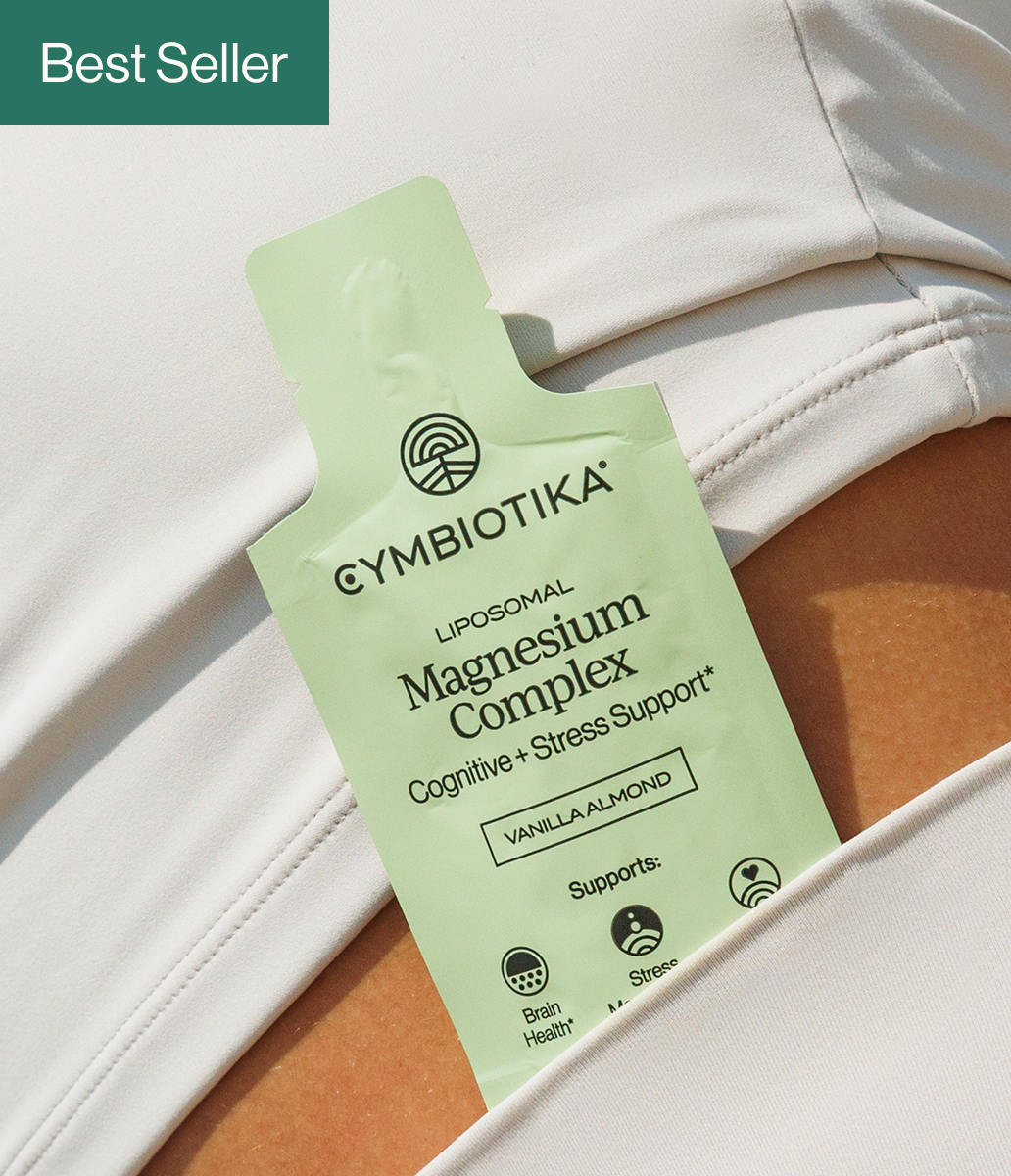Table of Contents
- Introduction
- Understanding Cardio and Its Impact on Heart Health
- The Benefits of Intense Cardio
- Potential Risks of Intense Cardio
- Finding the Balance: Intensity vs. Duration
- Practical Tips for Incorporating Intense Cardio
- Conclusion
- FAQ
What if we told you that a workout could be both exhilarating and potentially risky for your heart? It’s a paradox that many fitness enthusiasts grapple with. As we lace up our sneakers and hit the gym or the pavement, we often hear conflicting messages about exercise intensity and heart health. High-intensity workouts, such as High-Intensity Interval Training (HIIT), are all the rage, promising quick results and improved cardiovascular fitness. But is intense cardio good for the heart?
At Cymbiotika, we believe that understanding the nuances of exercise can empower us to make informed choices about our health. In this blog post, we’ll delve into the relationship between intense cardio and heart health, explore the benefits and potential risks associated with high-intensity workouts, and provide actionable insights to help you navigate your fitness journey.
Introduction
The debate over whether intense cardio is beneficial for heart health can be traced back to the burgeoning fitness culture that has taken the world by storm. In recent years, high-intensity workouts have gained popularity, especially among individuals seeking efficient ways to improve their fitness levels. However, as the trend grows, so does the scrutiny surrounding its effects on cardiovascular health.
Research has shown that regular exercise is one of the best things we can do for our hearts. Yet, the intensity and duration of that exercise can significantly impact its benefits. Some studies suggest that while moderate exercise is universally beneficial, excessive high-intensity workouts may pose risks for certain individuals.
In this article, we aim to answer the critical question: Is intense cardio good for the heart? We will explore the science behind high-intensity workouts, the physiological responses they elicit, and how they fit into a balanced fitness regimen. Together, we’ll empower ourselves with knowledge that can help us make informed choices about our health and wellness.
What You Will Learn
By the end of this post, you will have a deeper understanding of:
- The physiological effects of intense cardio on heart health.
- The potential risks associated with high-intensity exercise.
- How to balance intensity and duration in your workouts for optimal cardiovascular benefits.
- Practical tips for incorporating various exercise intensities into your routine.
Let’s embark on this journey together as we uncover the complexities of heart health and exercise.
Understanding Cardio and Its Impact on Heart Health
The Basics of Cardiovascular Health
Before diving into the specifics of intense cardio, it’s essential to understand the basics of cardiovascular health. Our cardiovascular system comprises the heart, blood vessels, and blood, which work together to supply oxygen and nutrients to the body while removing waste products. A healthy cardiovascular system is vital for overall well-being and longevity.
Regular exercise plays a crucial role in promoting heart health by:
- Improving Circulation: Exercise increases blood flow and oxygen delivery to tissues, enhancing overall cardiovascular function.
- Strengthening the Heart Muscle: Just like any other muscle in the body, the heart becomes stronger with consistent exercise, allowing it to pump more efficiently.
- Regulating Blood Pressure: Regular physical activity helps maintain healthy blood pressure levels, reducing the risk of hypertension-related complications.
- Lowering Cholesterol Levels: Exercise can help raise high-density lipoprotein (HDL) cholesterol, often referred to as "good" cholesterol, while lowering low-density lipoprotein (LDL) cholesterol and triglycerides.
The Role of Exercise Intensity
Exercise intensity refers to how hard your body is working during physical activity. It can be measured in various ways, including heart rate, perceived exertion, and oxygen consumption. Understanding exercise intensity is pivotal in determining the effectiveness of workouts for cardiovascular health.
- Moderate-Intensity Exercise: Typically defined as physical activity that raises your heart rate to 50-70% of your maximum heart rate. This includes brisk walking, cycling, or swimming at a comfortable pace.
- Vigorous-Intensity Exercise: This involves activities that elevate your heart rate to 70-85% of your maximum. Examples include running, high-energy aerobics, or intense cycling.
Research suggests that both moderate and vigorous exercise can yield health benefits, but they may also elicit different physiological responses.
The Benefits of Intense Cardio
Engaging in high-intensity cardio can provide several advantages for heart health. Here are some key benefits associated with intense workouts:
1. Improved Cardiovascular Fitness
One of the most notable benefits of high-intensity cardio is its ability to enhance cardiovascular fitness rapidly. Studies have shown that HIIT can lead to significant improvements in aerobic capacity, which is vital for overall heart health. By incorporating short bursts of intense exercise followed by recovery periods, HIIT workouts can elevate heart rate and improve oxygen uptake more efficiently than traditional moderate-intensity workouts.
2. Time Efficiency
For those with busy lifestyles, high-intensity workouts can offer a time-efficient way to achieve fitness goals. Research indicates that even short sessions of vigorous activity can yield substantial cardiovascular benefits. For instance, a 15-minute HIIT session may be as effective as a longer, moderate-intensity workout in improving heart health.
3. Enhanced Metabolic Function
Intense cardio workouts can stimulate metabolic processes, leading to improved insulin sensitivity and better blood sugar control. This is particularly beneficial for individuals looking to manage their weight or reduce the risk of type 2 diabetes. As we prioritize our wellness, science-backed supplements can also play a role in supporting our metabolic health. At Cymbiotika, we offer high-quality products designed to complement your fitness journey.
4. Potential for Weight Loss
High-intensity workouts can lead to greater calorie burn in a shorter amount of time compared to moderate-intensity exercise. This can be advantageous for individuals aiming to lose weight or maintain a healthy body composition. However, it’s important to remember that nutrition and overall lifestyle play significant roles in weight management as well.
Potential Risks of Intense Cardio
While there are numerous benefits to intense cardio, it’s essential to recognize that it may not be suitable for everyone. Here are some potential risks associated with high-intensity workouts:
1. Increased Risk of Injury
The intensity of vigorous workouts can increase the risk of injury, particularly if proper form and technique are not maintained. Common injuries include strains, sprains, and overuse injuries. It’s crucial to listen to your body and avoid pushing beyond your limits.
2. Atrial Fibrillation and Heart Strain
Some studies suggest that excessive high-intensity exercise, especially among older adults or those with pre-existing heart conditions, may increase the risk of developing atrial fibrillation (AFib) or other heart-related issues. AFib is an irregular heartbeat that can lead to complications such as stroke.
3. Overtraining Syndrome
Engaging in high-intensity workouts without adequate recovery can lead to overtraining syndrome, characterized by fatigue, decreased performance, and an increased risk of injury. It’s vital to incorporate rest days and listen to your body’s signals to prevent burnout.
Finding the Balance: Intensity vs. Duration
As we explore the intricacies of intense cardio and heart health, it becomes clear that finding the right balance between intensity and duration is key. Here are some strategies to consider:
1. Mix It Up
Incorporating a variety of exercise intensities into your routine can help you reap the benefits of both moderate and vigorous workouts. For example, consider alternating between moderate-intensity steady-state cardio and high-intensity interval training throughout the week. This approach allows you to challenge your body while also giving it time to recover.
2. Listen to Your Body
Pay attention to how your body responds to different levels of intensity. If you experience unusual symptoms such as chest pain, shortness of breath, or excessive fatigue, it’s essential to consult with a healthcare professional. Everyone’s fitness journey is unique, and it’s crucial to prioritize your well-being.
3. Set Realistic Goals
Setting achievable fitness goals based on your current fitness level and lifestyle can help you stay motivated and engaged in your workouts. Whether your focus is on improving cardiovascular fitness, building strength, or enhancing overall wellness, having clear goals can guide your exercise routine.
4. Consult a Professional
If you’re considering incorporating high-intensity workouts into your routine, especially if you have pre-existing health conditions or concerns, consulting with a fitness professional or healthcare provider is advisable. They can help tailor a workout plan that aligns with your goals and health needs.
Practical Tips for Incorporating Intense Cardio
Here are some actionable tips to help you incorporate intense cardio into your fitness regimen safely and effectively:
-
Start Slow: If you’re new to high-intensity workouts, begin with shorter intervals and gradually increase the intensity as your fitness improves.
-
Use Proper Technique: Focus on maintaining good form during high-intensity exercises to reduce the risk of injury. Consider working with a trainer if you’re unsure about technique.
-
Incorporate Recovery: Allow adequate time for recovery between intense workouts. This can include rest days, active recovery (such as light walking or yoga), and proper hydration and nutrition.
-
Stay Hydrated: Intense workouts can lead to increased fluid loss, so staying hydrated is crucial for performance and recovery. Water and electrolyte-rich beverages can help replenish fluids lost during exercise.
-
Monitor Your Heart Rate: Consider using a heart rate monitor to track your intensity during workouts. Aim to stay within your target heart rate zone to ensure you’re exercising at the right intensity for your goals.
Conclusion
As we’ve explored the question of whether intense cardio is good for the heart, it’s clear that the relationship between exercise intensity and heart health is multifaceted. While high-intensity workouts can offer numerous benefits, it’s essential to approach them with caution and mindfulness, particularly if you have underlying health concerns.
Regular exercise remains one of the most effective ways to promote cardiovascular health, and finding the right balance between intensity and duration is key. By mixing up your workouts, listening to your body, and setting realistic goals, you can create a fitness routine that supports your heart health and overall well-being.
At Cymbiotika, we believe in empowering our community to take control of their health through science-backed supplements and transparent ingredients. As you embark on your fitness journey, consider taking our AI quiz to find the best supplements tailored to your unique needs. Together, we can achieve our wellness goals.
FAQ
Q1: Can intense cardio be harmful to my heart?
A1: While intense cardio can provide significant benefits, excessive high-intensity exercise may pose risks, particularly for individuals with pre-existing heart conditions. It’s important to listen to your body and consult with a healthcare professional if you have concerns.
Q2: How often should I incorporate intense cardio into my routine?
A2: It’s generally recommended to balance high-intensity workouts with moderate-intensity exercise. Aim for a mix of both throughout the week, ensuring you allow for recovery.
Q3: What are some examples of high-intensity cardio workouts?
A3: High-intensity exercises can include sprinting, cycling at a fast pace, circuit training, and high-intensity interval training (HIIT). These workouts typically involve short bursts of intense effort followed by rest or lower-intensity activity.
Q4: Is it necessary to warm up before high-intensity workouts?
A4: Yes, warming up is crucial to prepare your body for intense exercise. A proper warm-up increases blood flow to muscles, enhances flexibility, and reduces the risk of injury.
Q5: Should I consult a doctor before starting an intense workout program?
A5: If you have pre-existing health conditions or concerns about your heart health, it’s advisable to consult with a healthcare professional before starting an intense workout program. They can provide guidance tailored to your individual needs.
*These statements have not been evaluated by the Food and Drug Administration. This product is not intended to diagnose, treat, cure, or prevent any disease.























